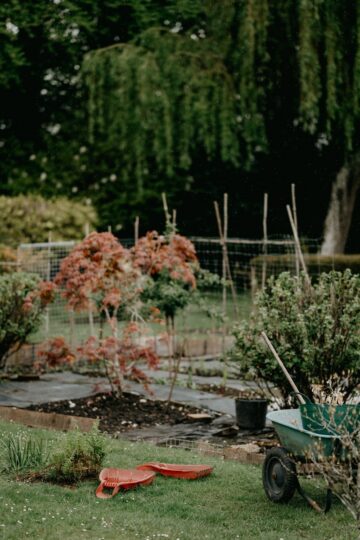
Want to start gardening at home, but not sure where to start? gardeningguidez.com will provide an explanation of how to garden at home that produces results from start to finish.
In addition to channeling hobbies, gardening activities can also increase your income at home.
After all, the benefits of gardening at home are also diverse.
Starting from getting rid of boredom, teaching patience, to learning to start the process.
You can really start gardening properly as long as you know the steps.
For those of you who are just starting out, gardening at home does seem difficult. However, this can be anticipated by preparing a mature plan.
Starting from the location, selection of vegetable and plant seeds, planting media, maintenance, to harvesting.
Come on, see in full how to garden at home from the beginning to the end.
1. Choose the Right Location
Quoted by the National Gardening Association, the first way to the garden at home is to determine the right location. It is recommended to choose a planting location that is easy to get sunlight, sufficient space, and close to water sources. Choose an area that is flat enough to prevent erosion.
2. Determine the Type of Cultivation
When you have determined the right location at home, the next step is to determine the type of cultivation. Think about whether you want to grow vegetables, fruits, or ornamental plants? To help decide, it’s a good idea to determine based on climate, space, taste, and skill level. For beginners, it is better to consider the types of cultivation that are easier to grow, such as carrots, beans, cucumbers, peppers, and lettuce.
3. Find Good Seeds
Choose good seeds or seeds if you have determined the type of cultivation you have chosen. The requirements for good seeds are those that have a germination rate of at least 80 percent. One thing to consider when buying seeds from other people is the expiration date. Also, pay attention to the percentage of growth and purity of seeds to ensure successful growth. On the other hand, you can take advantage of seeds and seeds from daily consumption. Collect the seeds and wash with water until clean. Next, dry the seeds in the sun. Usually, seeds that are good for planting are those that don’t swell in water.
4. Prepare the Soil and Planting Media
The next step is to prepare the soil and planting media. You can do hydroponic gardening or polybag gardening.
For planting media, mix soil, compost, and natural fertilizer in the right ratio according to the characteristics of the plant or vegetable. Don’t forget, set the right soil pH with the normal pH range of the soil in the range of 6-8 or the best condition is 6.5-7.5.
5. Determine the Planting Schedule
The growing conditions and cycles of each cultivated species may vary depending on the crop and the season. So try not to sow all the seeds at the same time.
6. Plant Seeds
If the seeds, planting media, and planting schedule are ready, then all you have to do is plant them properly. Place the seeds into the planting medium by providing a distance from each other. Spacing is considered important for future growth. If they are too close together, the roots will fight each other for nutrients.
For more leverage, provide an ideal spacing of 20 cm x 20 cm.
plant in the home garden
7. Flush
After planting, water the planting medium so that the plant roots get nutrients from the wet soil. Water gently to keep the soil moist throughout the growing season. It is important for the future, the best time to water is in the morning when the sun has not yet risen.
Meanwhile for the afternoon after 3 pm when the plants are in a not too high temperature.
8. Clean Weeds
During treatment, try to pay attention to the condition of the planting medium, one of which is the risk of weeds appearing. Well, mulch is the most effective way to prevent these weeds. Add a layer of organic mulch to keep weeds from appearing on the plants. If weeds appear, remove them directly from the roots to prevent regrowth. The presence of weeds can divert soil nutrients that should be obtained by cultivated plants.
9. Pay Attention to Space as it Grows
Check the spacing of the plants considering that over time the condition of the plants will be large and tall. However, this can be prevented if from the start you have calculated the ideal spacing as needed.
10. Give Fertilizer As Needed
To maximize growth, you must give him fertilizer as needed. Give NPK or liquid organic fertilizer to keep it rich in nutrients. You can also give natural fertilizers from household consumption such as eggshells, banana peels, salt, and others.
11. Start Harvest
The harvest period depends on the characteristics that are cultivated.
Some vegetables even harvest quickly in a matter of months.
For example, spinach, kale, lettuce, mustard greens, radishes, beans, and cucumbers. To harvest depends on the growing medium and the characteristics of the plant. However, you can use your hands by picking directly from the roots. Harvesting should be done in the morning or evening to reduce weight loss due to transpiration caused by the heat of the sun.


